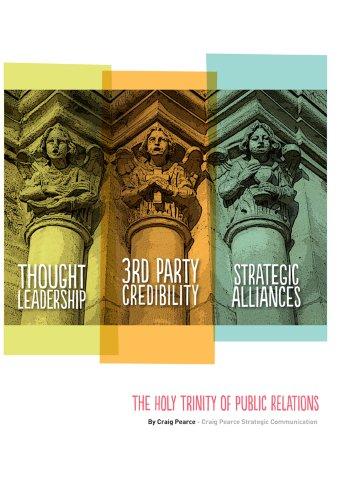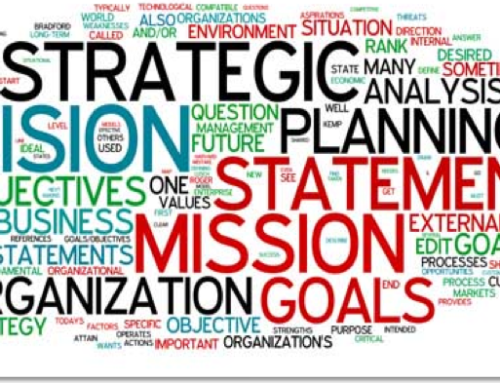Thought leadership is widely practiced by organizations seeking to differentiate themselves from peer organizations, enhance their reputation and gain consistent coverage in targeted communication mechanisms.
The priority mechanism is often mainstream media (although this is being somewhat usurped by the rise of social media).
Illustration by guydownes.com.au ©
Characteristics of excellent thought leadership tend to be originality, boldness and worthiness (i.e. topics that are weighty and that target audiences are likely to be interested in).
How does thought leadership aid in differentiation?
- Thought leadership is a range of platforms or topics that an organization and its leader(s) develop and speak out on that characterize that organization
- The platforms are chosen, partly, to help clarify what an organization stands for or represents, and provide points of difference to its peer organizations
- Inherent within thought leadership is a value-adding approach that is predominantly not self-centred or self-serving
- An organization’s vision and core values are ideal factors to subtly weave into thought leadership platforms. Please do not, however, bang on about them. No Bible-bashing!
Building an organization’s reputation is a primary reason for building the thought leadership pillar:
- The inherent leadership dimension of thought leadership is an effective means of enhancing reputation
- Building an organization’s reputation positively impacts its brand and helps improve tactical sales-related activity and outcomes
- The momentum generated by an enhanced reputation and visibility in the media and other forums will make it easier to place further thought leadership content.
It has a good chance of also leading to requests for further thought leadership content or commentary on key platforms relevant to the organization (an old school viral characteristic).
Should there be one or many thought leadership activists for PR?
Control over the “brand” and reputation has often prompted organizations to stick to their single leader being the person who represents its thought leadership.
From a brand perspective this means consistency. From a reputational point of view, it has meant less likelihood of mistakes being made and, often, a high degree of refined articulation.
I do not believe this is the best approach to take, however; a belief that has become even stronger since the emergence of social media and content marketing.
There are numerous advantages to having more than one employee provide and/or be a “front” for organizational thought leadership:
- It provides a greater breadth, depth and quality of thought leadership content
- It allows for greater customization and relevance of thought leadership for segmented target audience groups
- It is a risk management approach for the brand, as it minimizes the damage that occurs to the brand if the “thought leadership employee” leaves the organization
- If one “thought leadership employee” finds it challenging to make the time to contribute to the program, there are other options to keep the momentum rolling
- It helps humanize the thought leadership for its relevant target audience segment, because it can use the person most actively involved in that market segment
- It can inspire employees and help them become stronger brand ambassadors
- It also helps humanize the brand by having more people associated in high-level communication and engagement roles, and not restricting it to a more distant, CEO-type personage
What about you: what has your experience with thought leadership led you to think on the topic?
 Craig Pearce is an experienced corporate communication practitioner, who recently released a free white paper, “The Holy Trinity of Public Relations,” of which this post is an excerpt. The white paper provides an overview of the strategic dimensions of, and practical implementation tips on, thought leadership, 3rd party credibility and strategic alliances.
Craig Pearce is an experienced corporate communication practitioner, who recently released a free white paper, “The Holy Trinity of Public Relations,” of which this post is an excerpt. The white paper provides an overview of the strategic dimensions of, and practical implementation tips on, thought leadership, 3rd party credibility and strategic alliances.

![[EVENT]: PR Hacks for Small Biz (online)](https://shonaliburke.com/wp-content/uploads/2021/06/FB-Ad-1200x800-01-01-01-Copy-500x383.jpeg)








[…] Campaigns: Add the attendees into your nurture campaign, and carefully pick thought leadership pieces to send them. This will give you more insight on what they’re interested in and their needs. Make […]
@HowieSPM totally agree Howie, very timely post- particularly as it relates to the world of online media and the channels we as communicators and leaders now have at our disposal to establish thought leadership. At the end of the day- it’s also heavily about establishing trust in the organisation/individual relationship. Thanks for sharing Craig! Looking forward to reading the white paper! Jamie
I love your post Craig! Timely.
There is a big difference between thought leadership meant to help clients and that which benefits yourself or your agency. I am working on a post about a very well known PR/Digital Agency that I feel is being fraudulent in their ‘Thought leadership’ because it is biased towards their own work and platforms vs maybe what is reality and what is best for their clients.
I see a few other agencies in the same ‘area of Thought Leadership’ that are taking on more an advisory position with their clients pushing no specific platform of agenda except trying to help their clients improve their businesses.
Obviously you know which of the two will have a more sustainable life span with their businesses.
@HowieSPM
It is definitely difficult for organisations to let go of the notion that not all their communication activity should be ‘me-centred’. They often feel it doesn’t justify effort or expenditure. Only the continuing generation of evidence-based research and ROI to justify this ‘new’ (?) thought leadership/inbound marketing approach will convince the naysayers. Same ol same ol.
As usual with effective public relations professionals, we need to keep pushing the boundaries of what is perceived to be best practice so that we can help make a positive difference to organisations and their stakeholders.